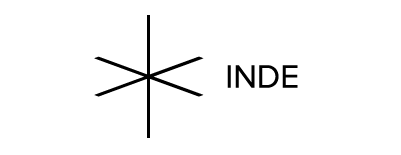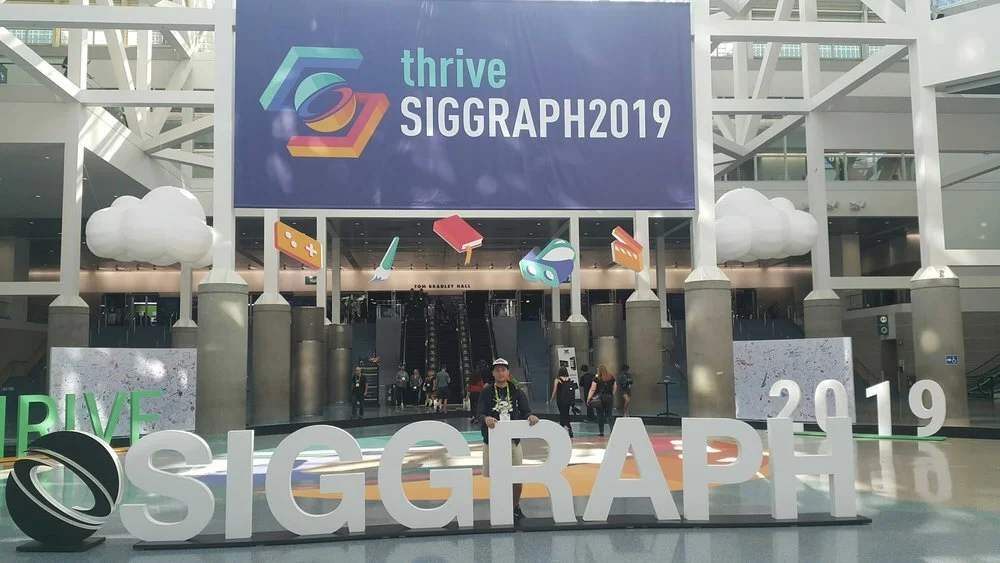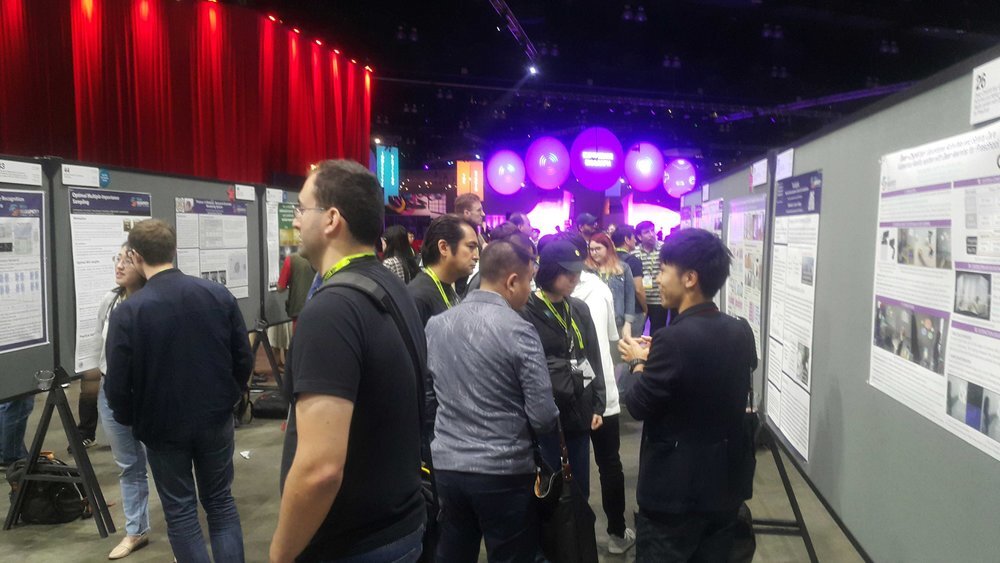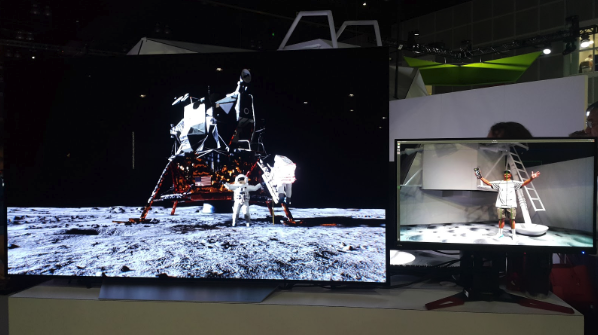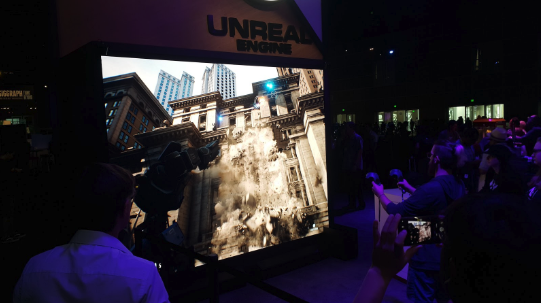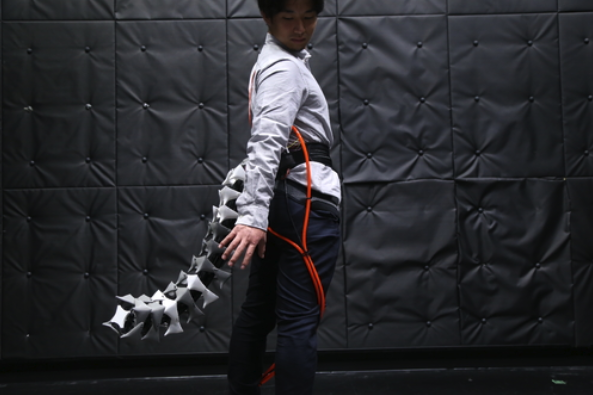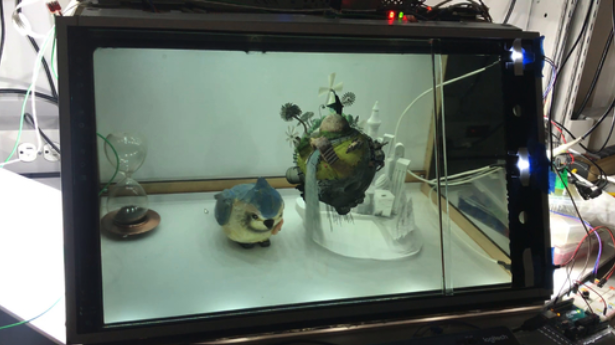Motion Capture, Real-Time Face Animation and More: Here's What You Missed at ACM Siggraph 2019!
2019 is the second year when INDE has presented its R&D activity and products for peer-reviewed submissions at SIGGRAPH, the leading scientific conference in the field of computer graphics and interactive techniques. Last year, BroadcastAR, our core product, was exhibited in the “Immersive Pavilion” while this year we introduced the latest interactive version of HeroMirror in the Poster session.
This year the poster session was located in a very visible position, in between the Exhibition - where more than 150 companies presented their work - and the Immersive Pavilion/Emerging Technologies session. This placement ensured high traffic and visibility for all posters, including ours.
Every day had a dedicated poster presentation session where authors were available to provide open conversations regarding their work. Posters covered a wide range of topics including adaptive technologies, AR/VR, displays, rendering and others. The feedback fro our work was positive, and its simplicity and effectiveness was highlighted in several conversations - specifically including its applicability to museums.
The corresponding paper can be read in the ACM Digital Library.
R&D - Proof of Concept: Gesture control using an RBG webcam (no Kinect or Real Sense)
The exhibition where big players such as Microsoft, Amazon, NVIDIA, Unity, Unreal Engine as well as smaller companies present their works was located next to the poster session. I recognized two trends this year.
Motion capture, including suite-based solutions and computer vision-based methods, was a very popular topic with about a dozen exhibitors.
Real-time face animation was also among the hot topics, and several exhibitors have chosen this emerging technology as their core product. This correlates well with the increasing number of enquiries regarding virtual makeup mobile apps INDE has received this year.
The most spectacular booths belonged to the bigger companies:
NVIDIA built a moon landing experience with a spaceship where the visitor's movement was transferred to an astronaut (another use case of vision-based motion tracking);
Unreal demoed their CHAOS engine on a huge display and Unity had an amazing ‘How to Train Your Dragon’ VR experience.
In the AR/VR Village of the Immersive Pavilion a slight shift has happened since last year: mostly universities and smaller companies exhibited their work, with a few exceptions (Magic Leap, PTC) while in 2018 the bigger players took more space (Google, Disney, NASA).
Head-mounted displays dominated this session, including Magic Leap! Unfortunately, their booths were always booked a day before their “concrete” sessions, so we couldn’t try their official apps. However, a company called Viewer Ready has developed a mixed reality car driving game, which finally allowed us to test Magic Leap’s headset. Overall, the experience provided by Magic Leap was suitable, but I would be very excited to compare it with Microsoft’s new HoloLens.
The Emerging Technologies session provided the most interesting solutions. One of the most bizarre technological creatures that I have seen so far was presented here: an artificial biomimicry-inspired anthropomorphic tail to allow us to alter our body momentum for assistive and haptic feedback applications.
Another funny thing was a VR experience where one can find himself/herself in Pinocchios body and perform interesting things with his extended noses such as remotely sniff food which was allowed by some perfume containers and nose-attached wires. 360-Degree Transparent Holographic Screen Display by Sony and ‘Aa Transparent Display With Per-Pixel Color and Opacity Control by Adobe Research have shown interesting directions in future display mechanisms which can be used in the field of Augmented Reality as well.
This summary cannot cover every aspect of the five-day-long conference, and I’m sure a lot of interesting events (technical paper session, doctoral thesis fast forward, VR theatre, etc) have not been mentioned. Participation in these leading conferences with more than eighteen thousand of attendees enables huge visibility for our work and provides insights into the technological trends in our field. Also, it is highly influential and gives inspirations that contribute new ideas and connections with peers in our technological & scientific area.
Tamás Matuszka
Director of Research & Development, INDE
